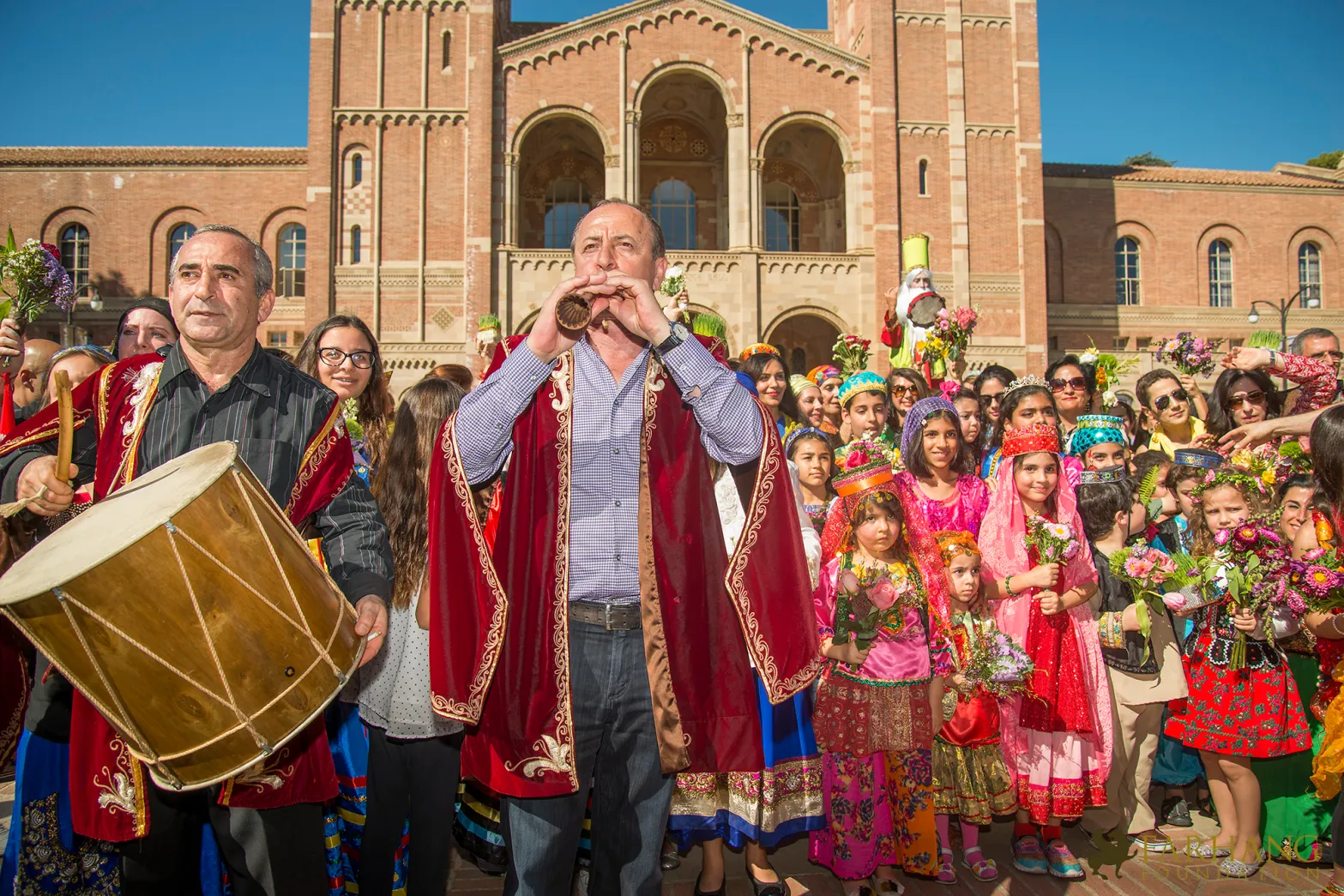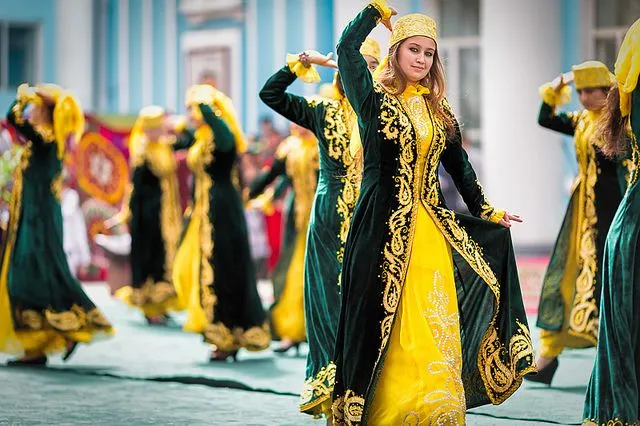Which Countries Celebrate Nowruz?

- m.farzin81
- 3 February 2025
- Uncategorized
- 3 minutes
Nowruz means “New Day ” and is a celebration that transcends borders, uniting diverse cultures in welcoming the arrival of spring and the Persian New Year. Observed by over 300 million people worldwide, Nowruz is steeped in traditions that vary from country to country, each adding its unique flavor to the festivities. In this blog, we explore the rich tapestry of Nowruz celebrations across different nations.
Iran: The Heartland of Nowruz
Iran stands as the birthplace of Nowruz, where the festival is deeply ingrained in the nation’s cultural fabric. Celebrations commence with thorough house cleaning, known as “Khaneh Tekani,” symbolizing a fresh start. Families set the Haft-Seen table, featuring seven items starting with the Persian letter “S,” each representing a different blessing for the new year. The Nowruz celebration ends with the Sizdah Badr, which is celebrated outdoors to unite with nature.
The Significance of Haft-Seen
The Haft-Seen table is a central element of Nowruz in Iran, comprising:
- Sabzeh (Sprouted Wheat or Lentils): Symbolizes rebirth and growth.
- Samanu (Sweet Pudding): Represents power and strength.
- Senjed (Dried Oleaster Fruit): Denotes love and compassion.
- Seer (Garlic): Stands for health and medicine.
- Seeb (Apple): Signifies beauty and fertility.
- Somāq (Sumac): Reflects the sunrise and patience.
- Serkeh (Vinegar): Embodies wisdom and aging.
Chaharshanbe Suri: The Festival of Fire
On the eve of the last Wednesday before Nowruz, Iranians celebrate Chaharshanbe Suri by jumping over bonfires, chanting phrases that express a desire to leave behind the old and embrace the new. This ritual is believed to purify individuals and prepare them for the year ahead.
Afghanistan: A Blend of Tradition and Festivity
In Afghanistan, Nowruz is celebrated with a mix of cultural and religious practices. The “Guli Surkh” (Red Flower) festival in Mazar-i-Sharif marks the beginning of the new year, where people gather to enjoy music, poetry, and traditional games. Families prepare special dishes and engage in various customs to honor the occasion.
Haft Mewa: A Sweet Start to the Year
Afghan families prepare “Haft Mewa,” a compote made from seven types of dried fruits and nuts, symbolizing the sweetness and prosperity hoped for in the coming year. This delicacy is shared among family and friends during the Nowruz celebrations.
Jashn-e Dehqān: Celebrating the Farmer’s Day
Coinciding with Nowruz, Afghanistan observes “Jashn-e Dehqān” or Farmer’s Day, highlighting the importance of agriculture in the country’s economy. Festivities include agricultural fairs, exhibitions, and traditional games, emphasizing the nation’s agrarian roots.
Central Asia: A Mosaic of Nowruz Traditions
Nowruz holds a significant place in Central Asian countries such as Kazakhstan, Uzbekistan, and Tajikistan, where it is celebrated with various unique customs and traditions.
Kazakhstan: Unity and Renewal
In Kazakhstan, Nowruz is a public holiday celebrated with communal meals, traditional music, and sports competitions. People clean their homes, plant trees, and prepare traditional dishes like “Nauryz kozhe,” a soup made from seven ingredients, symbolizing prosperity.
Uzbekistan: Cultural Performances and Cuisine
Uzbekistan marks Nowruz with vibrant cultural performances, including traditional dances and music. Families prepare special dishes such as “Sumalak,” a sweet paste made from wheat sprouts, cooked collectively by communities, reflecting unity and cooperation.
Tajikistan: Traditional Sports and Festivities
In Tajikistan, Nowruz is celebrated with traditional sports like “Buzkashi” (a game played on horseback) and “Gushtigiri” (wrestling). People visit friends and family, exchange gifts, and enjoy traditional meals together.

Embracing Nowruz: A Global Celebration
Nowruz transcends national boundaries, celebrated by diverse communities worldwide, each infusing the festival with their unique cultural practices. From the Middle East to Central Asia and beyond, Nowruz serves as a testament to the shared human values of renewal, unity, and hope for a prosperous new year.
Frequently Asked Questions About Nowruz
- What is Nowruz?
Nowruz, meaning “New Day,” is the Persian New Year celebrated on the spring equinox, symbolizing the arrival of spring and the renewal of nature.
- What are common Nowruz traditions?
Common traditions include house cleaning, setting the Haft-Seen table with seven symbolic items, visiting family and friends, preparing special dishes, and participating in cultural performances and traditional games.
- How long does Nowruz last?
The duration of Nowruz celebrations varies by country, typically lasting from one day up to two weeks.
- What is the significance of the Haft-Seen table?
The Haft-Seen table includes seven symbolic items representing prosperity, health, and happiness in the new year.
- Is Nowruz a religious festival?
While Nowruz has Zoroastrian roots, it is mainly celebrated as a cultural festival by people of various faiths.
- How is Nowruz different from other New Year celebrations?
Unlike the Gregorian New Year, Nowruz aligns with the solar calendar and the arrival of spring, symbolizing natural renewal.
- What foods are commonly eaten during Nowruz?
Popular Nowruz foods include Sabzi Polo ba Mahi (herbed rice with fish), Samanu, and Ash Reshteh (Persian noodle soup).
You can find authentic Persian Nowruz decorations, Haft-Seen sets, and traditional handicrafts at Persis Collection, the largest and most trusted online Persian shopping gallery with worldwide






Comments